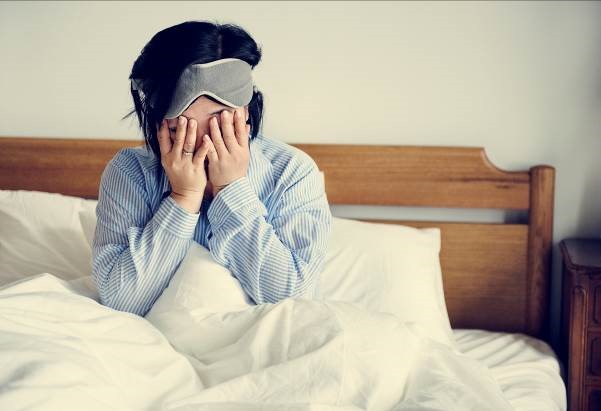What screenome can do for you that screen time can�t

 Photo: Active Health
Photo: Active Health
With tech giants like Apple and Google releasing Screen Time and Digital Wellbeing features, cutting back on device usage is easily one of the more popular trends of the digital age. Screen time allows you to determine how much time you are spending on your devices. Less time spent on your devices is generally known to be better for you, but the screenome shows that there is more to the hard and fast rule.
What is a screenome?
Dubbed after the word genome, the study of screenome focuses on how you interact with your screens, rather than how long you spend on them. According to a paper by Stanford University, your screenome is the record of individual experiences represented as a sequence of screens that people view and interact with over time, constituting psychological and social life on digital devices. Simply put, examining your individual screenome provides insight into the exact on-screen activities that have a correlation with different aspects of your life, including health.
READ ALSO: The scary effects of technology on sleep
Here are some of the things that screenome can do that screen time just can�t.
Digital symptoms of mental health disorders
 Photo: Active Health
Photo: Active Health
There is growing evidence that shows the association between mental health issues and excessive screen time, and screenome could show us why. In a recent study by the University of Pennsylvania amongst 683 people, 114 of whom had a diagnosis of depression, it was found that there was a pattern between the online behaviour of people diagnosed with depression and those who weren�t. The screenome analysis measured that those with depression used language suggestive of preoccupation with self.
The researchers also found that analysing Facebook language content can be a comparable screening tool or model for depression, when matched against other validated clinical questionnaires. Another aspect of the screenome that can be examined is the pace and frequency of quick switching between screens, which may be used to diagnose conditions like hyperactivity. Hence, monitoring our on-screen activities and interactions can give us a bigger understanding of our mental well-being.
Wider knowledge of health behaviours
 Photo: Active Health
Photo: Active Health
Another application of the screenome is inferring health behaviours from on-screen activities, according to a research paper done by the American Society for Clinical Pharmacology and Therapeutics. Through collecting high frequency screenshots, the screenome is able to capture interactions between individuals and digital health sources that might go unobserved in a clinic setting, or allow medical professionals to access data that could be forgotten by patients.
It was found that those who allowed their screenome to be observed by the researchers were found to be accessing many different sources of health information on their devices, which highlights that screenome data could enable prevention, aid and management of various aspects of an individual�s health.
Despite challenges such as reliable detection of health-related content and accuracy of user�s health, further research in the area of screenome and health behaviours could lead to the development of new methods for early detection of health-related risks, monitoring for adverse drug events, and precision interventions for physical health.
What does this mean for screen time?
 Photo: Active Health
Photo: Active Health
Screen time and its effects can be better understood by screenome. Screen addiction is commonly cited as one of the reasons to cut down on screen time, although it is unclear how it is caused. Finding a causal relationship between our biology and screen addiction could allow for more effective methods of reducing or dealing with screen addiction. The effects of screen addiction such as poorer mental health and sleep deprivation can also be better dealt with.
 Photo: Active Health
Photo: Active Health
The biggest change that advice for screen time might see is that it might no longer be a �one size fits all� solution. Advice might become varied to suit individual needs based on your screenome. It could also become more specific and go beyond just the number of hours spent, but also extend to things such as screen behaviour and media consumption.
READ ALSO: How to reduce screen time in the digital age?
While research for the screenome to improve our screen time habits is ongoing, we still have to stick to the healthy habits we know! We know that reducing screen time can be tough especially when our devices are such an integral part of our lives, but that doesn�t make it impossible. If you�re facing difficulties maintaining a healthy relationship with your screens, our Experts at Active Health Labs are happy to help!
Read also:
- How does blue light affect sleep?
- Is there a link between screen time and childhood obesity?
- Is screen time before bedtime affecting my child's sleep?





![ActiveSG Academies and Clubs Logo (Solid Colour)[8647]](https://www.activesgcircle.gov.sg/hs-fs/hubfs/ActiveSG%20Circle%202023Theme/images/ActiveSG%20Academies%20and%20Clubs%20Logo%20(Solid%20Colour)%5B8647%5D.png?width=150&height=65&name=ActiveSG%20Academies%20and%20Clubs%20Logo%20(Solid%20Colour)%5B8647%5D.png)




-01.png?width=200&height=141&name=Team%20Singapore%20Logo%20(Red)-01.png)









.jpg?width=162&height=162&name=Skechers%20Friendship%20Walk%202025-31Aug2025_thumbnail%20(1).jpg)
.jpg?width=162&height=162&name=JS%20retreat%2030-31%20August%20(400%20x%20400%20px).jpg)